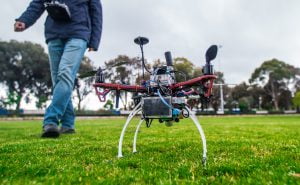Video production for social media: optimisation strategies.
Welcome to the era where video content rules social media. With billions of people scrolling through their feeds every day, video has become an increasingly important medium for marketers to capture their audience’s attention. However, optimizing video content for social media platforms is no walk in the park.
From understanding specific platform specifications to competing for attention in a crowded feed, there are several challenges to creating video content that resonates with your target audience. But worry not, in this blog, we will guide you on how to optimize your video production for social media platforms, so that you can create content that stands out and connects with your audience.
Understanding video specifications for different social media platforms.
Social media platforms have specific video specifications that creators need to adhere to in order to maximize engagement with their followers. The aspect ratio, resolution, file size restrictions, and duration limits can vary across platforms, requiring creators to create different video versions for each platform. For example, Instagram and Facebook favour vertical videos with a 9:16 aspect ratio, while YouTube uses a 16:9 aspect ratio.
Resolution and file size restrictions also differ across platforms, with Instagram allowing 1080 x 1080 pixels and 4GB file size, while Twitter only allows 512MB file size. Duration limits on videos are another factor to consider, with Instagram allowing up to 60 seconds, Snapchat 10 seconds, and TikTok 15 seconds.
It’s essential to understand these video specifications to optimize content for each platform and ensure maximum engagement. Failing to adhere to these specifications can result in poor quality videos, leading to lower engagement rates. Therefore, creators must create their videos while keeping in mind the specifications for the different platforms.
Creating visually appealing video content.
Creating visually appealing video content is a crucial aspect of optimizing your video production for social media. Using branding elements like logos, consistent font styles, and color schemes can help establish your brand identity and make your videos instantly recognizable. Color grading and filters can also drastically enhance the visual appeal of your videos by creating a consistent look throughout. Incorporating text and captions not only increase accessibility but also make your content more engaging to viewers who prefer to watch videos without sound.
Don’t be afraid to experiment with different styles and techniques to find what works best for you. A personalized touch can go a long way in making your videos stand out from the rest. So don’t shy away from adding a bit of humour or sarcasm to keep your audience hooked.
Remember that your video content should align with your overall social media strategy and brand message. Stay true to your brand’s values and keep your visuals consistent to build trust and recognition amongst your audience.
Optimising video for social media algorithms.
Optimising video for social media algorithms requires a strategic approach to ensure maximum visibility and engagement. One key aspect is the selection of an attention-grabbing thumbnail or video preview that accurately represents the content. Additionally, closed captions and subtitles can increase accessibility and retention rates. Remember, viewers are often watching videos on-the-go with the sound off. Incorporating relevant keywords and tags can also increase the discoverability of the content and improve organic reach.
However, it’s important to avoid using clickbait tactics that can result in disengagement and a high bounce rate. While it may increase initial clicks, if the content doesn’t accurately reflect the preview or thumbnail, viewers are likely to leave the video early, which can negatively impact the algorithm.
Analysing the success of your video content is crucial in determining what works and what doesn’t. Utilise A/B testing to experiment with different visuals, titles, and description lengths to determine optimal content. Additionally, analytics tools such as YouTube Insights and Facebook Insights can provide valuable demographic and engagement data. Make necessary changes based on performance, but don’t be discouraged if a video doesn’t immediately perform well. Consistency and persistence are key in building a loyal audience for your brand.
Testing and analysing the performance of video content.
Testing and analysing the performance of video content is crucial in optimising its effectiveness on social media. Using A/B testing allows for the comparison of different versions of the same video to determine which performs better with the audience. Analytics tools, such as views, likes, and shares, help measure engagement levels and identify areas for improvement. Making necessary changes based on performance, such as adjusting video duration or incorporating closed captions, can lead to higher engagement and reach on social media platforms. Remember, it’s not just about creating great video content but also about understanding what works and what doesn’t!
The final word on video production for social media.
So there you have it, folks! Optimizing your video content for social media is crucial for your success online. By understanding the various platform specifications and creating visually appealing content, you’ll be able to boost your engagement and reach. Keeping up with the latest trends and developments in video production will ensure that your content stays relevant and effective. So get out there, make some killer videos, and watch your social media presence soar!
More articles.

The rise of mobile video production: tips for success.
In recent years, the world of video production has undergone a transformative shift with the rise of mobile video production. The accessibility and convenience of

Video production ethics: responsibility and impact.
In today’s digital world, video production has become easily accessible to all. It is an exciting time with endless possibilities for creativity and expression. But

Video production on a budget: maximising resources.
Video production on a budget can be quite the challenge. As content needs grow, budgets often shrink or stay the same. Marketers find themselves at